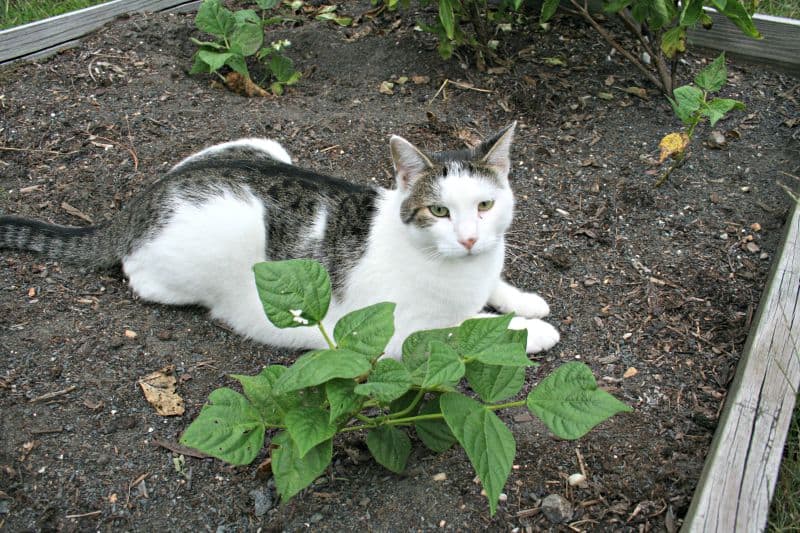This weekend, I began cleaning up the vegetable garden. I was lucky enough to stumble across some neat organic garden insect control – my lady beetles (ladybugs) tackling the white fly invasion.
The green beans started off so promising this year. They’re one of the few crops I can grow in my raised bed vegetable garden without worrying about insects, fungus, and every other catastrophe known to organic gardeners. Until this year, that is, when an invasion of cucumber beetle nymphs and white fly threatened to kill every last bean plant.
Well, it is September, and I’ve canned at least 16 pints of green beans this year, more than enough for us over the winter. I have another batch in the refrigerator waiting to be canned, and I figured that what the heck, I could give the white fly a break and just let it eat. Maybe the winter cold would kill them, maybe not, but I’m not going to spray pesticides around just to eke out a few more weeks of green beans.
This weekend, the spindly, skeletal green bean leaves depressed me, as did the weeds in the potato beds and the spent sunflower heads. I decided to tackle some much-needed vegetable garden cleanup. I began pulling weeds, dead plants, and half-dead green bean plants, picking off the last of the green
Insect Control in Organic Gardens
An organic garden is a fascinating space. Insects tend to control other insects if you give them half a chance and provide them with a habitat that attracts them. I’m glad I didn’t reach for the pesticides when I saw those pesky white flies a few weeks ago.
White Fly Control
Other organic remedies for white fly control would have been just as good, such as sticky traps. These are yellow cardboard slices with glue on the sides. They attack by a stick to the garden bed. White flies are attracted to the yellow cardboard, fly into it, and get stuck there by the glue. It’s a good organic remedy when you don’t want to use any sprays. Unfortunately, you can also catch helpful bugs on such cards, but they will catch quite a bit of what you want to catch such as white flies. It’s a good organic method of controlling white flies.
Tent Caterpillars
Tent caterpillars have invaded the orchard. We remove these pests by hand. Put on rubber gloves, bring a bucket and a trowel, and break open the web. Then scoop the insects into the bucket to remove them.
Bean Patch – On to Harvesting
As for the bean patch, I have a few left to harvest, and then it’s on to canning. I started to pick beans this morning but I was distracted by the cats. Today, Shy Boy “helped” by digging up some bean plants. Unfortunately, he dug up the only healthy ones left in the garden…but what can I say? One insect pest or one feline pest in the organic garden, it is fall, after all..and how many beans can two people eat in one winter?







What’s great about organic gardening is that it really allows nature to balance your garden and keep things under control. Ladybugs can be a great, natural pest defense, thankfully!